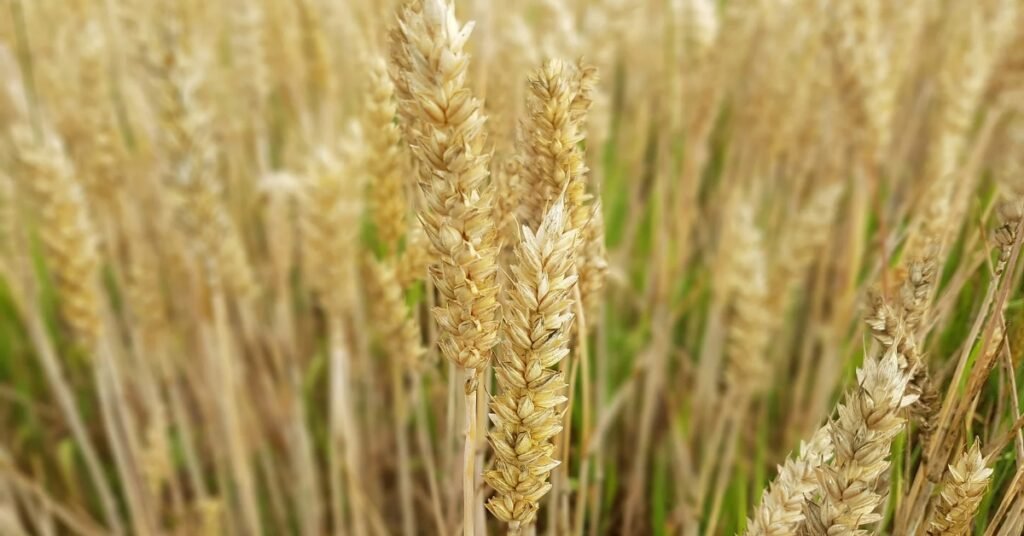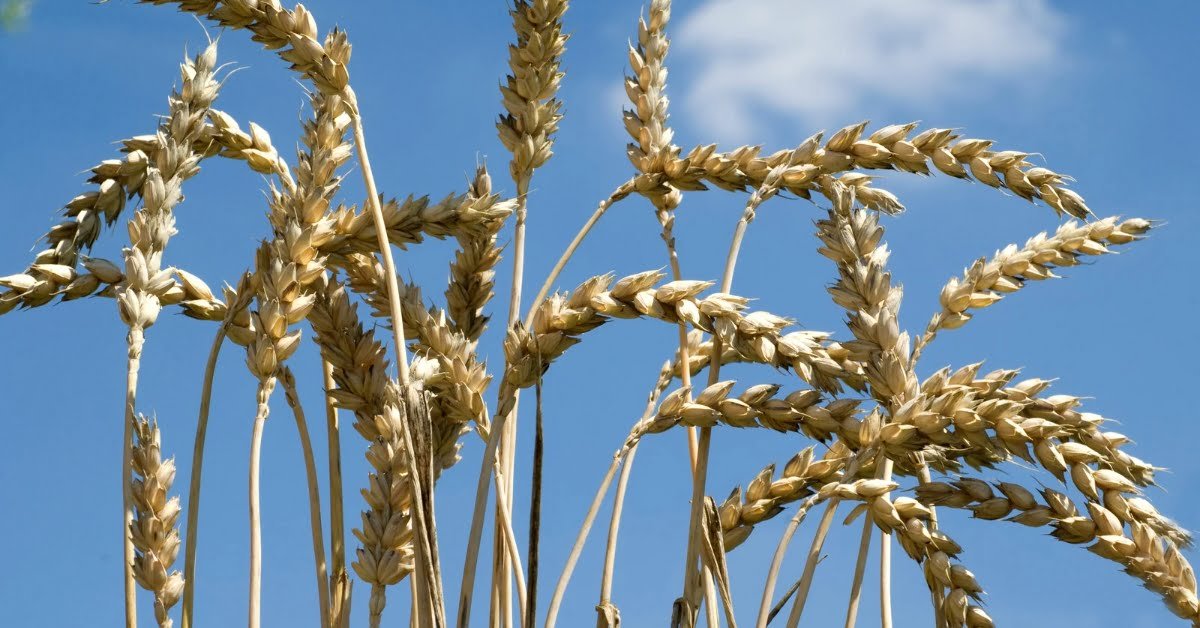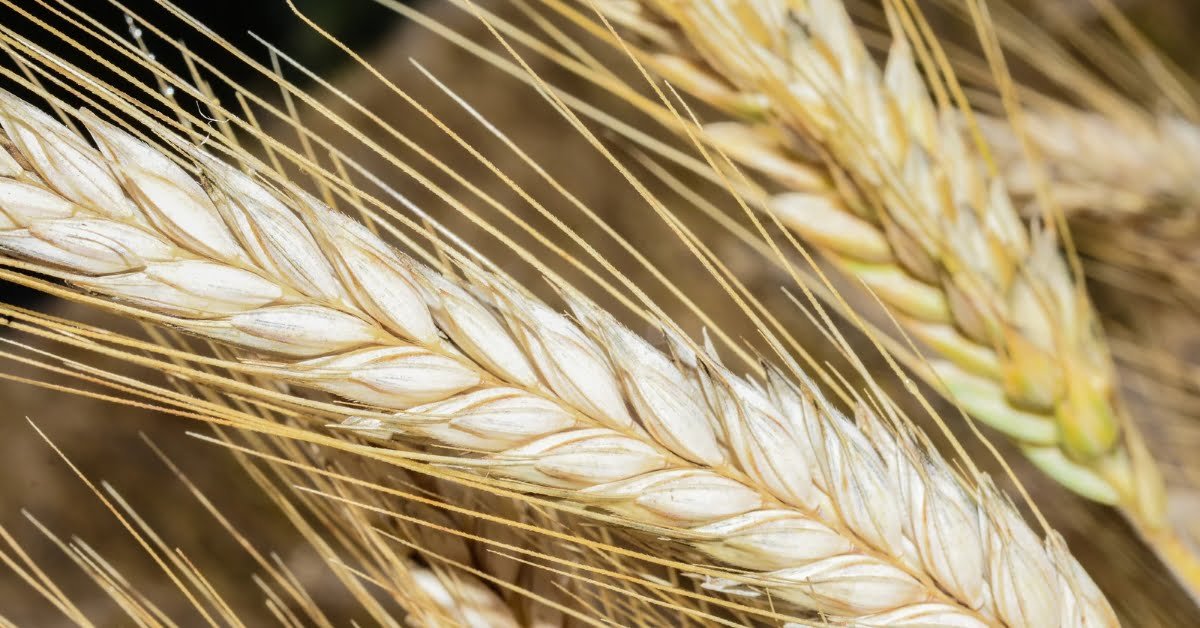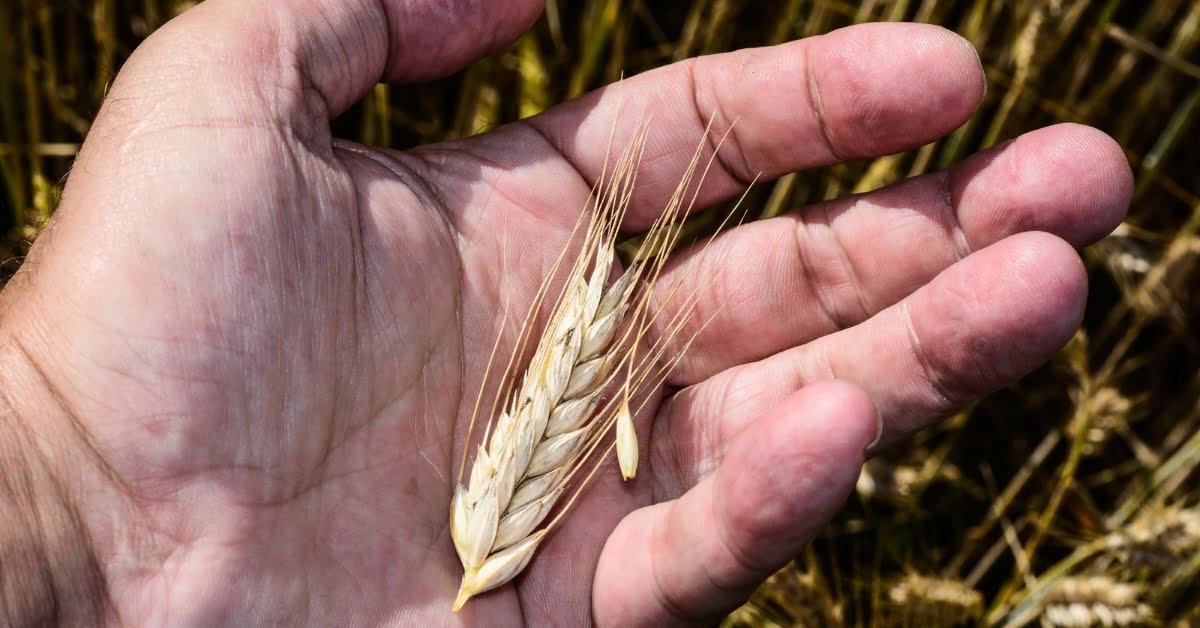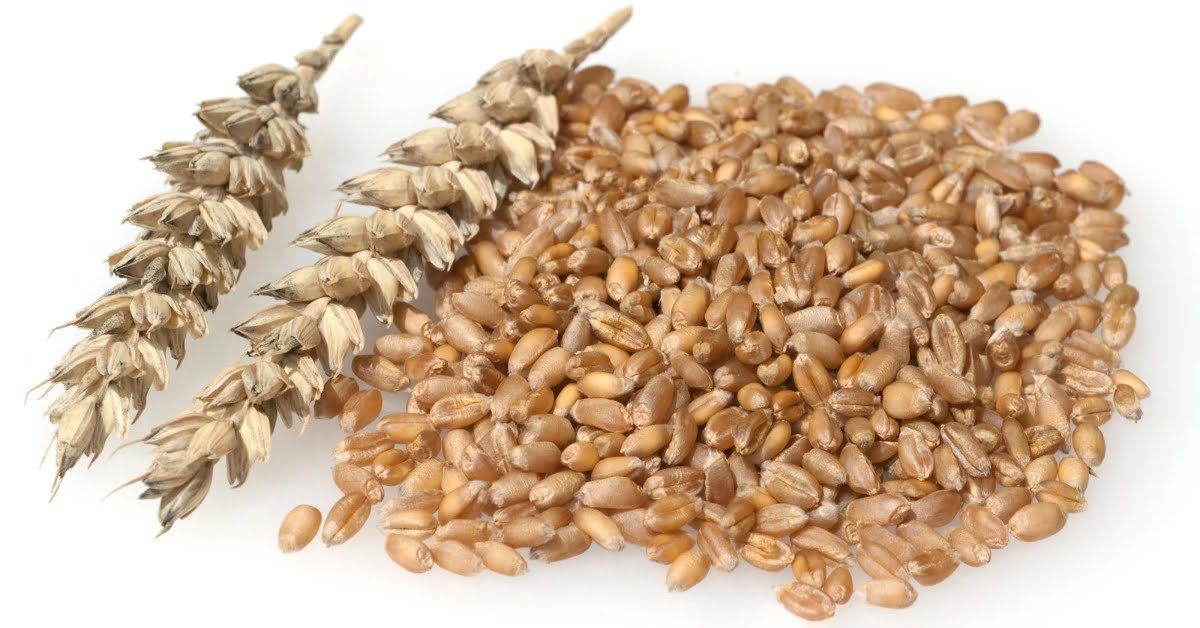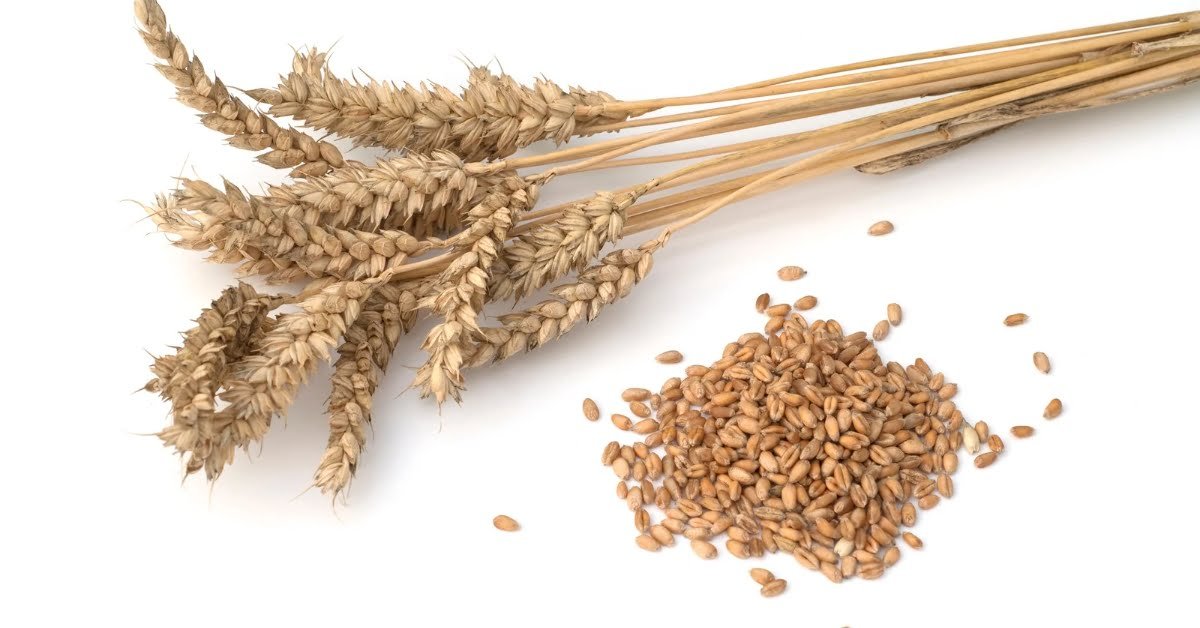If you like fresh-baked whole wheat bread, wait until you try it with wheat that you grew and ground it into flour yourself. Soft white wheat berries are a beautiful bright golden color with a mild nutty flavor and a touch of sweetness. They are perfect for making whole wheat all-purpose flour, so your baked goods will have a delicious whole wheat aspect.
Soft White Wheat Berries
| Common Names or AKA Names: |
|
| Botanical Name: | Triticum aestivum |
| Family: | Poaceae |
| Plant Type (Zone 8b): | Annual |
| Hardiness Zones: | Zones 7 through 10 |
| Mature Size: | 3′ – 5′ feet tall |
| Native Area: | Middle East |
| Bloom/Harvest Time: | Spring Wheat takes around 120-Days |
| Sun/Light Exposure: | ? to ? hours of Light. |
| Planting Depth: | 1.5″ – 2″ in depth |
| Soil Preferences: | Well-Drained Loamy Soil |
| Soil pH: | 5.5 – 7.5 |
| Aquaponically-Friendly: | YES | LEARN MORE |
| Hydroponically-Friendly: | YES | LEARN MORE |
DESCRIPTION:
USE:
Seed is cooked. The seed can be cooked as a whole grain but it is more usually ground into a powder and used as a flour for making bread, fermented foods, pasta, cakes, biscuits etc. High in gluten, it is the most common flour used for making bread. The seed can also be sprouted and then added to salads or juiced to make a healthy drink. A nutritional analysis is available.
The young stems are used in the treatment of biliousness and intoxication. The ash is used to remove skin blemishes. The fruit is antipyretic and sedative. The light grain is antihydrotic. It is used in the treatment of night sweats and spontaneous sweating. The seed is said to contain sex hormones and has been used in China to promote female fertility. The seed sprouts are antibilious, antivinous and constructive. They are used in the treatment of malaise, sore throat, thirst, abdominal coldness and spasmic pain, constipation and cough. The plant has anticancer properties.
Green Grass Grove can not take any responsibility for any adverse effects from the use of plants. Always seek advice from a professional before using a plant medicinally.
The straw has many uses, as a biomass for fuel etc, for thatching, as a mulch in the garden etc. A fibre obtained from the stems is used for making paper. The stems are harvested in late summer after the seed has been harvested, they are cut into usable pieces and soaked in clear water for 24-hours. They are then cooked for 2 hours in lye or soda ash and then beaten in a ball mill for 1½ hours in a ball mill. The fibres make a green-tan paper. The starch from the seed is used for laundering, sizing textiles etc.
What are the Health Benefits of Wheatgrass?
First, let us tell you about the benefits of wheatgrass. Wheatgrass is grown from the wheat seed (sometimes called wheat berries ). Did you know some research shows wheatgrass has been popularized as a health food as well as a medicinal supplement? This “super-food” is packed with vitamins, minerals and much more! In addition to using cut wheatgrass for your wheatgrass smoothies as we do in our delicious smoothie recipes, you can make wheatgrass juice or wheatgrass shots (usually 2-4 ounces) to use as well.
Wheatgrass can also be used for decoration, cats, and chicken fodder… or you could always let it grow, and eventually, you can make your own bread!
Culture & Cultivation:
An easily grown plant, it prefers a sunny position in a rich well-drained soil. Wheat is widely cultivated in most parts of the world, but less so in Asia, for its edible seed. There are many named varieties. This is a hexaploid species. Grows well with maize and with camomile in small quantities. For polyculture design as well as the above-ground architecture (form – tree, shrub etc. and size shown above) information on the habit and root pattern is also useful and given here if available. The plant growth habit is a clumper with limited spread [1-2].
If you want to learn more about cultivating this specific plant, you might want to check out our online courses where we have plant specific mini courses in addition to our standard fully packed courses and master gardening courses.
Planting & Care:
It is best to plant wheat in the spring, after all danger of frost has passed. The soil should be loose and well–drained, and wheat plants need full sunlight to thrive.
Caring for Backyard Wheat Grain
Growing new plants can be difficult at times but not to worry Green Grass Grove Academy is here to help! We are excited to offer Online Courses on plant care and other Gardening and Homesteading Courses. Our goal is to provide you with the knowledge and skills necessary to become a successful gardener. Our Online Courses are designed to be self-paced and to be completed at your convenience. Courses contain invaluable information to help you become the ultimate Gardener! In addition, Our Courses have entertaining multimedia, quizzes, and a final exam to test your knowledge. Upon completion of each course, you are eligible to receive a certificate of completion. Some of our most popular courses include Aquaponics/Hydroponics, Plant Pathology, Seeds & Seedlings, Microgreens, Plant Mini-Courses, and Insect Pest & Nutrients Management.
So what are you waiting for? Come on over to Green Grass Grove Academy and let us help you become the ULTIMATE GROWER!
Watering:
Wheat plants need about 1″ – 1.5″ inches of water per week, either from rainfall or irrigation. If possible, wheat should be watered early in the morning so that the plants have time to dry off before nightfall. This will help prevent fungal diseases from developing. If rain is not expected and irrigation is necessary, wheat can be watered using a sprinkler system, drip irrigation, or by hand–watering with a garden hose. Whichever method you choose, make sure to apply enough water so that it reaches the roots of the plants.
To check if your wheat plants are getting enough water, stick your finger into the soil near the base of the plant. The soil should be moist but not soggy. If it feels dry several inches below the surface, then your plants need more water.
Harvesting:
You will need to test the grains to know if it is ready to mature. Farmers will pop a few grains out of the head and either pinch it with their fingernails or put it in their mouth. You are looking for a firm, crunchy to hard texture. If the seed is soft, check it every day until you get hard kernels.
A small plot, less than 150 square feet, can be harvested by hand by picking off the heads. Larger plots will require tools such as a scythe and a cradle, or a sickle. Dry the harvested crops in the sun for 7-10 days.
After the harvest has dried, you are ready to start threshing the grain off the heads and remove the chaff. There are several techniques to threshing by hand, such as flailing, beating in a clean bin, or on a tarp. If you only have small amounts of wheat, place the heads in a plastic bag, tie the bag tightly around the stalks, and beat it on the ground to knock the seed out. Next, you can begin winnowing the chaff and debris from the grain. The easiest way to do this is to set up a box fan and slowly pour your wheat between two buckets, allowing the fan to blow the chaff away.
Storing:
You will want to avoid heat, light, moisture, and infestation from spoiling the grain. If you have a small harvest, freeze the dried grain and it will last for several years. If it is fully dried out, you can also store it in a food-safe 5-gallon bucket with a few silica packets to absorb any residual moisture. Commercial sellers often ensure it’s thoroughly dried and then sell it in burlap bags or ventilated poly bags, but those can allow rodents to find and eat your stockpile!
Take Our Online Insect Pest Management Course to become an expert at dealing with these pests and others too!
Learn More About This Plant!
The timing of planting can impact the success of your winter or spring wheat. If winter wheat is planted too late, the roots will not have developed enough to survive winter weather. Similarly, if spring wheat is planted too late, it may not produce large quantities of grain due to heat.
Weather such as heavy rains and high humidity can impede the growth of wheat. If you live in a region that is exposed to excessive moisture, try to find a high and dry spot to grow your crop and amend the soils to make it well-draining.
- Dislikes dogwood, cherry, tulips, pine and poppies.
- This plant is attractive to bees, butterflies and/or birds
The information in this post is NOT medical/nutrition advice, as we are not doctors or nutritionists. This information is for informational/entertainment purposes only and is not a substitute for professional medical advice, nutrition advice, diagnosis or treatment. If you have any concerns or questions about your health or nutrition intake, you should always consult with a doctor or other licensed and qualified healthcare professional.
Green Grass Grove Plant Profiles
No posts found!

